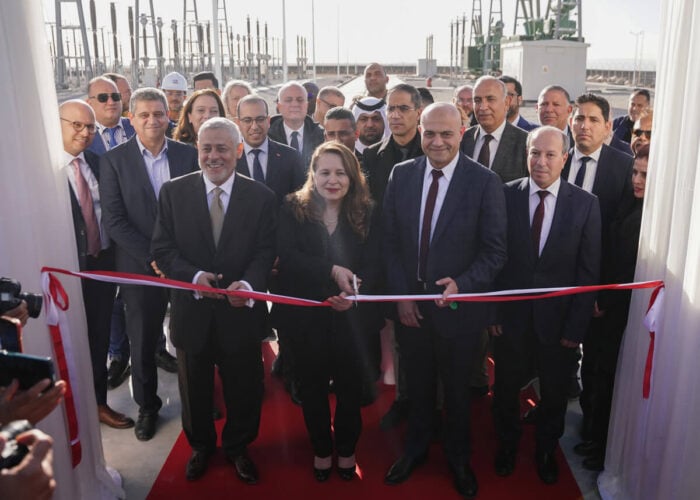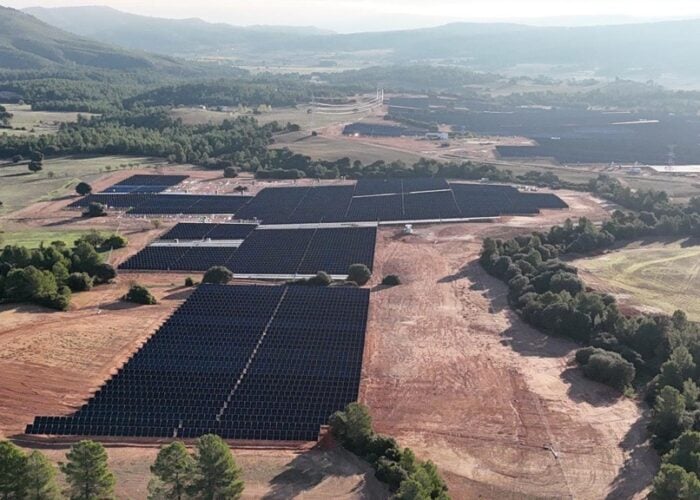
It’s clear that renewable energy projects will face headwinds over the next few years. The recently enacted One Big Beautiful Bill Act (OBBBA) phases out tax credits authorised earlier under the Biden Administration’s Inflation Reduction Act (IRA), and a series of on-again, off-again tariffs have created some uncertainty, particularly for the solar sector.
But despite that climate, other factors are coalescing into a relatively bullish outlook for most solar industry players, particularly in the utility-scale sector. The continued need for more power in most regions of the country — primarily due to the enormous power demand — makes it clear that solar will be part of the mix for years to come.
Try Premium for just $1
- Full premium access for the first month at only $1
- Converts to an annual rate after 30 days unless cancelled
- Cancel anytime during the trial period
Premium Benefits
- Expert industry analysis and interviews
- Digital access to PV Tech Power journal
- Exclusive event discounts
Or get the full Premium subscription right away
Or continue reading this article for free
Though some of the power demand will be met by gas-fired power facilities, those projects face headwinds of their own. Supply chain issues and other bottlenecks are resulting in lead times of up to six years to fulfil orders for new gas turbines. Even with many gigawatts of new power needed, it is unlikely that lead times for turbines, transformers and other electrical components will improve anytime soon.
The need to scale up power capacity rapidly is a niche that solar is uniquely prepared to fill.
Optimism largely shared
The backlog of active utility-scale solar projects remains high, and there is widespread sentiment that the major players — owners, developers and even some engineer-procure-construct (EPC) firms — have safe-harboured much of the critical equipment like transformers and other long-lead items that can take years to be manufactured and delivered.
These sentiments were a common theme at the 2025 RE+ Conference held earlier this month in Las Vegas.
A market research report published by Jefferies during RE+ noted that market sentiment within the industry was bullish due to an “improving backdrop for the sector”. Despite concerns about rising tariff-induced capital costs, rising inflation, labour shortages and costs of environmental compliance, a steady pace of solar construction is expected at least through 2027 and likely beyond, according to the report.
Tariff uncertainty can’t be discounted
Though domestic manufacturing of solar and electrical components has steadily increased, the industry still must procure a substantial amount of equipment from Asia and other overseas markets. While the industry would prefer to see tariff threats dialled back, strategies are in place to offset costs and procure needed equipment from wherever it is available.
The inventory of components stockpiled in advance of current stiff tariffs is expected to keep the industry busy until the 2029/2030 time frame, when current tax credits expire. This runway of projects means there should be enough project activity to keep the market stable and even maintain its recent growth trajectory.
In the first part of 2025, as it became clear that solar incentives might disappear and tariffs could become a factor, we saw much interest in moving forward and accelerating projects. That was before final rules came out in early July and the OBBBA was signed into law. Since then, the push to accelerate projects has tapered down a bit as the path forward has become clearer. Many project developers we’ve talked to believe they are in compliance with the tax credit rules and should be protected through 2029 and 2030.
The question of storage
More and more conversations are focusing on how to integrate battery storage with larger solar projects. With most IRA tax credits for storage remaining in place until at least 2032, there is a longer runway to design projects that can accommodate some storage capacity along with the primary solar output.
Though storage and solar elements are likely to remain bifurcated somewhat through 2025, all signs indicate that some flexibility may be considered to add storage in potential later phases.
Though it would seem like a logical proposition to add storage to extend the hours of power output available from a solar plant, certain technical issues must be addressed.
Interconnection agreements may become more complicated with storage and solar paired together. If an interconnection agreement allows 100MW of solar to be dispatched to the grid, for example, would that agreement still be in force if a battery energy storage system was added and off-peak grid power was needed to recharge batteries? In that case, the batteries would be a load and not a resource of power capacity.
Those nuances can certainly be addressed, but the ability to pair storage with solar will raise some additional considerations.
The role of EPC
In this new demand-driven market, the EPC’s role has evolved. It is no longer just about engineering, procurement and construction. It is about serving as a strategic integrator, navigating a confluence of risks: geopolitical (tariffs), technological (storage integration), logistical (supply chains), and regulatory (interconnection queues and permitting requirements). The primary value is not just in building the project, but in de-risking the entire asset lifecycle for the owner, and early integration at the onset of projects is important to building projects with predictable results.
Under the integrated EPC model, early engagement with an in-house engineering team is crucial to identifying project risks that can help an owner decide whether to stick with one project over another. Project risks, such as knowing just how much time certain long-lead items will require before delivery to the project site, or studies that may surface previously unidentified hurdles, can be identified with an integrated team that features close communication among the various disciplines.
Having a realistic schedule for the range of studies, permitting, applications for interconnection agreements, as well as countless other details, is an essential element in driving out costs and managing scope creep that can decimate schedules.
Early engagement also gives owners the time and flexibility they need to make important decisions on key aspects of a given project, including sometimes acknowledging the reality that proceeding with a given project may not be the most prudent business decision. Detailed and objective assessments of risks can reveal the projects in the portfolio that are the best candidates to generate returns that financial backers expect.
Solar is here to stay
Owners and developers are breathing a little bit easier as signals begin to indicate that the pipeline of solar projects should remain robust for some time to come. It’s a level of comfort that is allowing owners to partner with EPCs to mitigate the tariff risk and keep projects in their pipelines on schedule.
Strategies to obtain the equipment and materials needed for projects are in place and there is flexibility to watch developments and navigate different courses of action if needed.
Owners are working closely with EPC partners to understand what’s in and what’s out with tariffs. All players have their eyes wide open and understand that things could change again, and even more punitive tariffs could be implemented.
In short, the rules of the game have become much clearer. Risks are being managed properly against a backdrop of certainty that more power is urgently needed for the US grid, and there will be a continuing demand for clean energy.
Dalton Ruddell is a renewables development engineer at engineering, procurement, and construction (EPC) company Burns & McDonnell.






